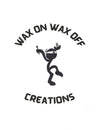Pysanky or Ukrainian Easter Eggs, are traditionally created leading up to Easter. The traditional designs, symbols and colors richly embrace Easter traditions from across many countries and not just Ukraine.
However, the art of decorating eggs (in my opinion) is something that transcends a single season. The relaxation, the thrill of creating and the artistic outlet that many find while writing pysanky can be enjoyed year round.
That is how it is for me. When I started out to decorate eggs, it was going to be an Easter activity. But that is not how it went. I quickly fell into the art and loved learning and growing artistically. I would continue to try new colors, designs and patterns. And people began to challenge me to try new things. "Hey, have you ever put this on an egg?" was a common question. I was always up for a new challenge as I would try to recreate an image on an egg with wax and dyes.
The months passed by and Christmas approached. I saw the opportunity to make eggs into ornaments and that was fun. It answered the question for people of "how am I going to display these?". By making them into ornaments, it was problem solved.
At one point, someone suggested a nativity. And that is where it started. I made a set for a friend and then built on it. It was very popular.
The reason I think is multi-faceted. One is that many people collect nativity sets and as one finds out as they start to collect something, finding unique twists on a collectable, is part of the fun. So finding a nativity set, made from eggs, checks several boxes.
That first year, I started with a 3 piece set. I was really careful to find 3 eggs that were of equal shape, size and coloring. I worked to be consistent in writing my designs and then when dying the eggs, I would work hard to have the same color across all the eggs. Sometimes they would cooperate and other times not.
Nativities have been a staple of my business. I like to try new things and offering those in unique ways on different eggs, is popular. And being someone who doesn't want to do the same thing year after year, I have tried to find new offerings.
Feedback and preferences about nativities played a part in that. Early on, people mentioned that they wanted just one egg, usually the center egg in my 3 piece set. So I started making single chicken egg nativity ornaments to cater to those who just wanted to have a nativity on a Christmas tree. It allowed me also to be able to do lots of different colors which appealed to people's varying tastes.
From chicken eggs, I moved to Turkey eggs. They are beautiful eggs. Speckled and a little bigger than chicken eggs. I made them as ornaments again.
From there, I moved to goose eggs. A larger piece and not typically something to hang, there have been several iterations of nativity on these large and beautiful white eggs. I was able to incorporate several traditional base Ukrainian designs and add a nativity twist to them.
I also tried some designs on emu eggs which was a whole new challenge in design and artistry.
Throughout all of this, another piece of feedback led me to the last 2 years. The problem of how to display an egg or a set was always raised. I had also heard that people loved having larger sets.
So I solved both of those issues in one go around. I created 5 piece and 8 piece sets and placed them on a wooden stand that looks like a stable. I moved past the need to have each egg be identical in coloring and dye color. I embraced the variety of sizes, coloring and egg shape into the sets and this added another unique layer to egg nativities. It was really neat to see a tiny partridge or pixie chicken egg and Easter egger eggs and turkey eggs all combined into one set.
This year, I was intending to revise the design of the original 3 piece set and put it on a stand but quickly realized that what would be better would be to have a star ornament hanging so this year, the 4 piece set has been born.
I love that people love to collect unique and beautiful things. It allows them to speak to how it was made, how they discovered it and so much more.
